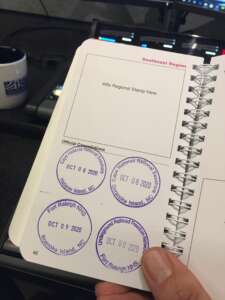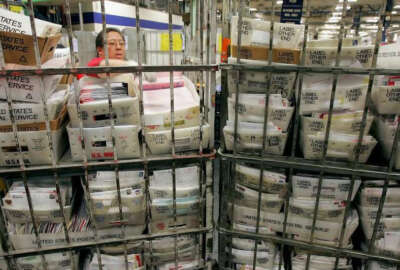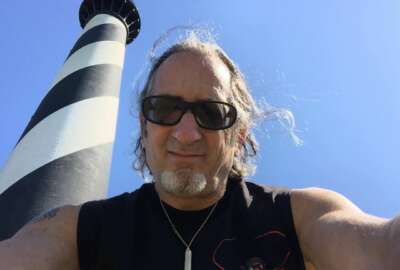
Time for a little human centered design
Two agencies show they take customer experience seriously.
Customer experience and its cousin, human centered design, have become popular pursuits for federal agencies. Something of old wine in new bottles, these concepts put the visitor, whether online or in person, as the starting point for building out what happens when they attempt to engage with, buy from, or obtain a benefit from an organization.
Good CX, to use the hip acronym, changes over time, in some cases thanks to technology. Take hotels. At one time, people wanted liveried bellhops to run out and grab your hat boxes and suitcases when your cab pulled up. Today, it’s thought people prefer self check in at mounted tablet kiosks. Or people are too cheap to tip, and hotels too cheap to field the levels of staffing of yesteryear.
Two federal organizations have been working to keep up with CX expectations for many years. For them, CX is related to their sustainability and ongoing relevance as institutions.
One, the National Park Service. It came out very early with online booking for cabins and related services. Today it has extensive online resources to help people plan in-person experiences at its locales. It shares the instinct with the Smithsonian in trying to bring some measure of its in-person possibilities to the digital screen.
The National Park Service is one of the few agencies with enthusiastic bipartisan support in Congress, as the recently enacted Great American Outdoors Act showed.
The NPS also enjoys a galaxy of support organizations. For instance, America’s National Parks, a dot-org, operates the parks’ Passport program. Being a kid at heart, and a National Parks fan, I just purchased the $10 Passport at a relatively tiny NPS location on Roanoke Island, North Carolina last week. At National Park locations nationwide, you present the sturdy, thick little booklet to the ranger at the visitor station. You receive a rubber-stamped confirmation that you were there. Or you can buy stamps to place in your passport. Proceeds benefit the parks.
 Even on the skinny Outer Banks you can pick up a half dozen “cancellations.” Famed for its beaches and clam shacks, the area is also home to the national monument to the Wright brothers. It also houses a national seashore, locations of the Underground Railroad, and the storied “lost colony” of 1587. Since we couldn’t pack both beach chairs and my wife on a motorcycle, we spent more time exploring than sunning.
Even on the skinny Outer Banks you can pick up a half dozen “cancellations.” Famed for its beaches and clam shacks, the area is also home to the national monument to the Wright brothers. It also houses a national seashore, locations of the Underground Railroad, and the storied “lost colony” of 1587. Since we couldn’t pack both beach chairs and my wife on a motorcycle, we spent more time exploring than sunning.
Not every National Park is Yellowstone or the Grand Canyon. Some are just a few acres with a small museum. Or maybe a fine lighthouse. Wherever we stepped, the rangers were uniformly cheerful. They knew their history. They enforced mask-wearing and social distancing. No less than, say, TSA or Immigration and Customs Enforcement agents, NPS agents face the public daily and answer the same questions a thousand times. Good CX.
Even in a beach area in October, the NPS sites were busy with lots of visitors. So there’s demand, even now during the pandemic. Perhaps especially because of the pandemic.
Knowing about the NPS’s multi-billion-dollar maintenance backlog, I was surprised at the spiffiness of the sites I visited. The roads and buildings seemed fresh, the shrubbery and signage in good condition. These small sites don’t house the extensive infrastructure of the big ones. Infrastructure and wilderness sound incompatible, but that’s the real story of parks in a country of more than 300 million people.
People — like me — will seek out parks, partly because of that Passport. But if the facilities are crumbling and inadequate, the connection will fray.
The Postal Service, unlike the Smithsonian or the National Park Service, is in something of a fight for survival. Just as a new generation of highways consigned U.S. Route 66 to an unofficial curiosity, email scorched the written letter and post card. USPS has labor cost and operational issues. It survives on package business, both organic and as a contractor to other carriers. In the mid-’90s, USPS toyed with the idea of becoming an internet service provider.
Recently, the USPS Office of Inspector General did a study of Generation Z and whether it is aware of or understands the Postal Service. Z encompasses people between 8 and 23 years old. They’re 20% of the population, yet how many of them know the pleasure of receiving a handwritten letter in a stamped envelope?
The IG found this: “Gen Zers recognize mail as a way to convey emotional connection. In fact, more Gen Zers said that receiving cards, letters and packages makes them feel [happier] than receiving video calls, emails or texts. They prefer mailing cards and letters over digital communication methods for sending wishes or congratulations; they believe mail makes the recipient feel special and shows they took the time to prepare and send a card.”
The study also found Gen Zers like packages. Who doesn’t? I recall as a 10-year old eagerly watching for the mailman every day, waiting for a pocket Sony transistor radio sent to me by my grandfather.
The USPS study’s principal author, Dr. Joanna Gerhardt, told me the emotional ties to mail offers rich possibilities for the Postal Service to build on. One recommendation was to imitate the Park Service Passport with a Post Office Passport, where the experience of a visit could improve with people collecting stamps of some sort, or even coins. To my mind, it suggests all sorts of possibilities for reinventing post offices.
If garish 19th century beards, fussy craft cocktails, and vinyl records can come back, why not fountain pens on vellum note cards mailed with a stamp to your Generation-X grandmother?
Copyright © 2025 Federal News Network. All rights reserved. This website is not intended for users located within the European Economic Area.
Tom Temin is host of the Federal Drive and has been providing insight on federal technology and management issues for more than 30 years.
Follow @tteminWFED






